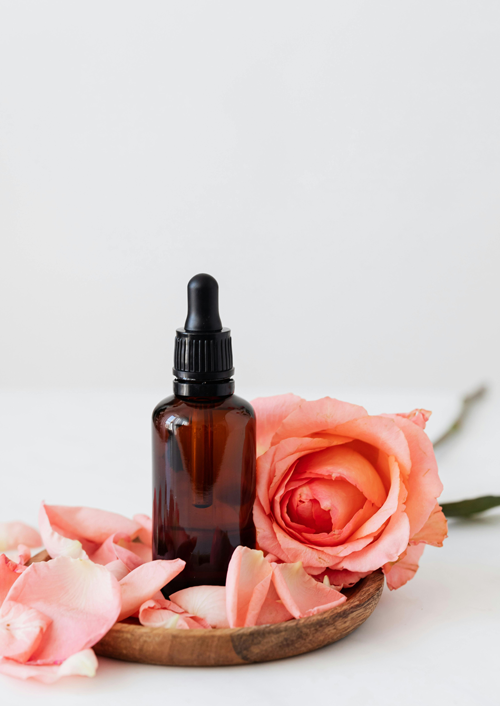National Medical Products Administration Unveils Groundbreaking Policy to Drive Raw Material Innovation.
On February 6, 2025, the National Medical Products Administration (NMPA) officially released the Announcement on Supporting Innovation of Cosmetics Ingredients (hereinafter referred to as the “Announcement”). This marks another major reform in China’s cosmetics regulatory framework following the implementation of the Regulations on Supervision and Administration of Cosmetics in 2021.
New Policies Fueling Raw Material Innovation
China’s cosmetics market, now exceeding 600 billion RMB, ranks as the second largest globally. However, the industry remains heavily dependent on imported core ingredients, with approximately 80% sourced from Europe, the U.S., Japan, and South Korea. In critical areas such as peptide synthesis and plant-based active ingredient extraction, domestic manufacturers still face technological gaps.
To address this challenge, the 14th Five-Year Plan emphasizes the goal of “increasing variety, improving quality, and creating brands” in the consumer goods sector. The Announcement aligns with this national strategy, aiming to enhance China’s self-sufficiency in cosmetic raw materials by fostering a fully integrated innovation chain—from research and development (R&D) to market application.
By providing targeted policy support, this initiative seeks to break free from the vicious cycle of price-driven competition and drive technological and product breakthroughs. The ability to innovate at the raw material level will become a crucial differentiating factor for brands competing in both domestic and international markets.
Key Policy Highlights: Building an Innovation-Driven Ecosystem
The Announcement introduces a four-dimensional system to support raw material innovation, streamlining regulations and providing direct industry incentives.
1. Faster Review and Approval Process
- Establishes a “dual-track” green channel for Class I new ingredients with independent intellectual property rights.
- Shortens the review time from 90 days to 45 days, expediting product development and market entry.
2. Advanced Safety Assessment Framework
- Implements tiered dynamic supervision using alternative testing methods such as OECD-approved QSAR computer modeling and 3D skin chips, reducing reliance on animal testing.
- Develops a raw material risk level database, categorizing 12,000+ existing ingredients into four levels based on allergenicity, toxicity, and other safety indicators to adjust regulatory intensity dynamically.
3. Stronger Intellectual Property (IP) Protection
- Introduces a patent linkage system requiring generic companies to disclose their patent status during registration, preventing IP disputes and protecting innovation.
- Grants a five-year data protection period for newly registered innovative raw materials, during which similar products will not undergo technical review, ensuring exclusivity for pioneers.
4. Industry-Academia-Research Collaboration and Financial Incentives
- Establishes a “Cosmetic Raw Material Innovation Laboratory”, providing up to 30 million RMB in funding for research collaborations with institutions such as the Chinese Academy of Sciences and Jiangnan University.
- Launches “Raw Material Innovation Industrial Parks” in key economic hubs like the Guangdong-Hong Kong-Macao Greater Bay Area and the Yangtze River Delta, offering tax incentives and streamlined import procedures for specialized equipment.
Industry Response: A Landscape of Opportunities and Challenges
The new policy framework has sparked diverse reactions across the cosmetics industry, with leading enterprises, international brands, and smaller manufacturers adjusting their strategies.
1. Domestic Industry Leaders Strengthen R&D Investments
- Huaxi Biology and Beitanie have announced plans to increase their R&D budgets to 8-10% of revenue.
- Furujia has initiated a project on “supramolecular packaging technology”, targeting the replacement of imported antioxidant raw materials by 2026.
2. Global Brands Shift Towards Local Sourcing
- L’Oréal China R&D Center has committed to expanding its local raw material procurement, reducing dependence on imported ingredients.
- Estée Lauder plans to establish an Asia-Pacific Raw Material Innovation Center in Shanghai, further embedding its operations within China’s evolving ecosystem.
3. Small and Medium-Sized Enterprises (SMEs) Face Transformation Pressures
- Many OEM manufacturers express concerns about rising testing costs under the new regulatory framework.
- The Guangdong Cosmetics Industry Association has proposed “innovation vouchers” to help SMEs cover compliance and R&D expenses.
4. Accelerated Product Development and Market Entry
- Regulatory authorities have streamlined the approval process for new raw materials, reducing the time to market for both general and special cosmetics.
- This fast-track system will provide a competitive advantage to companies that invest in cutting-edge ingredient research and formulation development.
Future Outlook: Reshaping the Global Cosmetics Innovation Landscape
The Announcement signals a fundamental shift in China’s cosmetics regulatory strategy, transitioning from post-market supervision to proactive innovation-driven guidance.
By 2028, China aims to increase the self-sufficiency rate of cosmetic ingredients to 50%, fostering a billion-dollar domestic raw material innovation market. As technologies like synthetic biology and green chemistry continue to advance, China’s cosmetics industry is evolving from a “manufacturing hub” into a global innovation leader.
With this policy-driven transformation, China is poised to redefine the future of beauty innovation, offering new opportunities for brands, researchers, and investors alike. As the industry accelerates toward scientific breakthroughs and sustainable development, it is clear that China’s influence on the global cosmetics landscape will only continue to grow.
